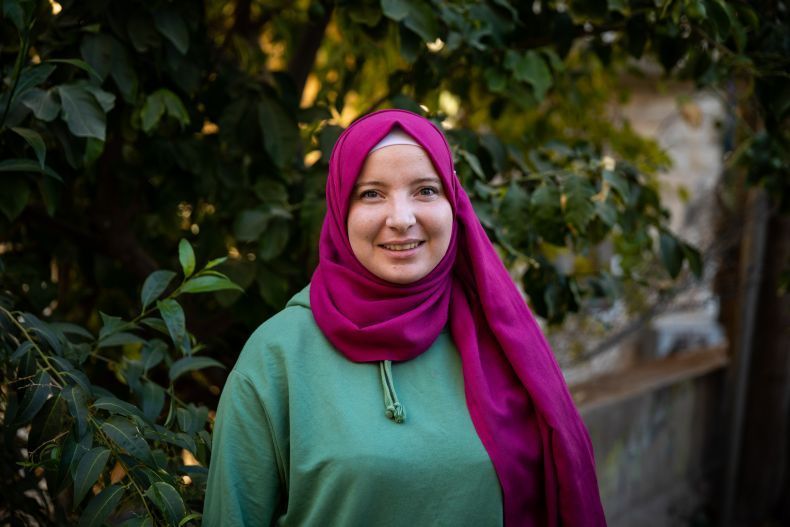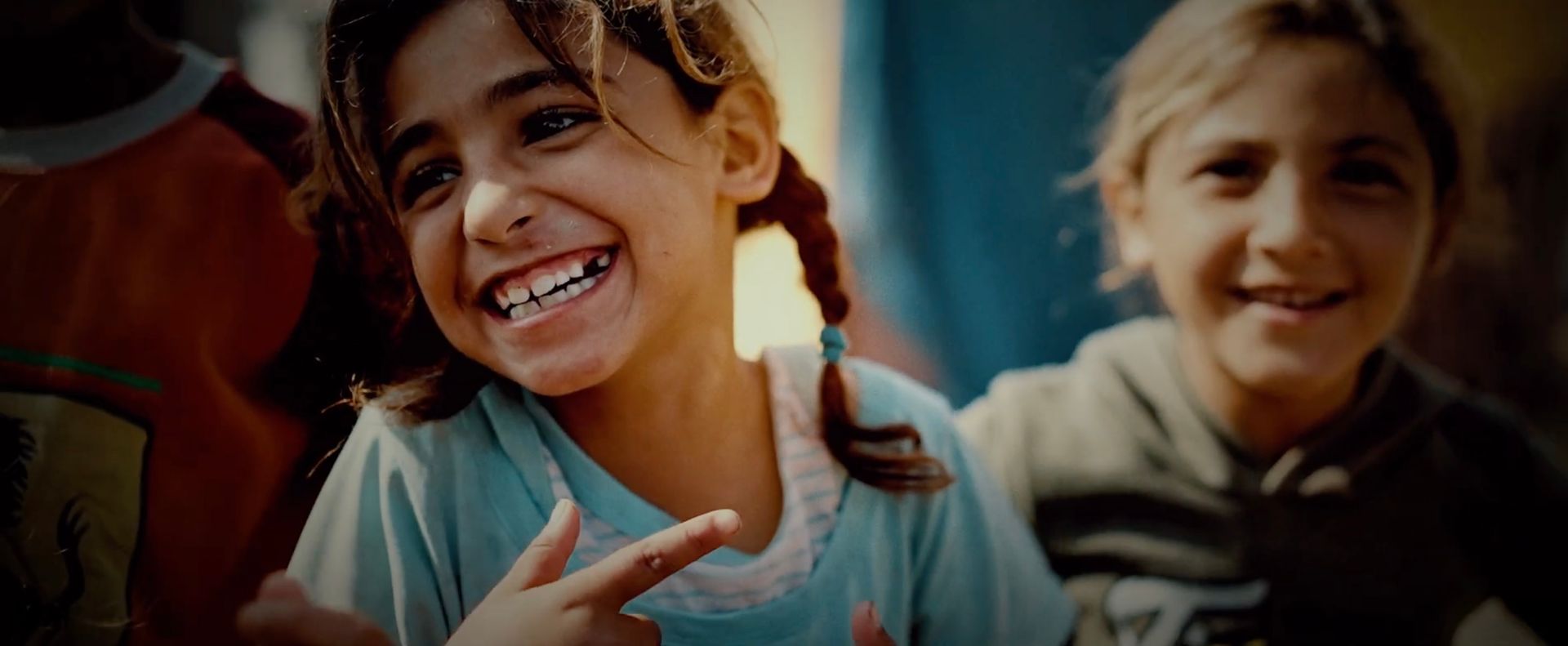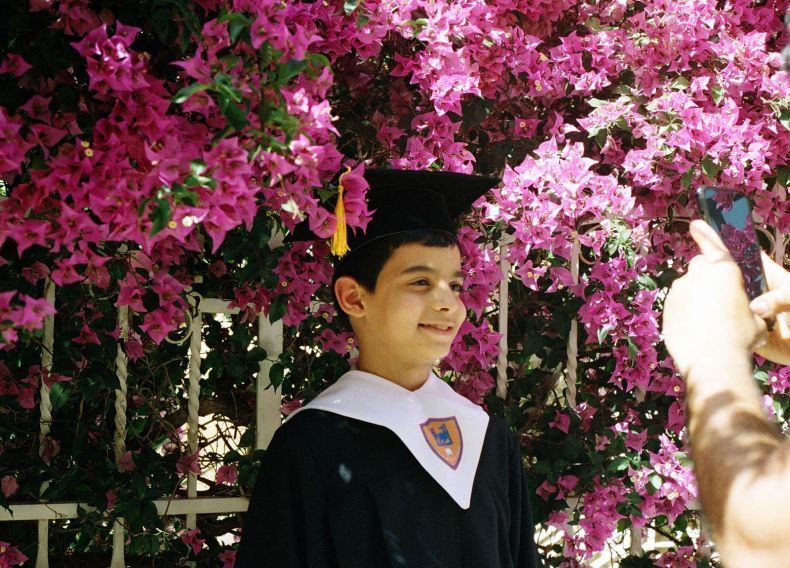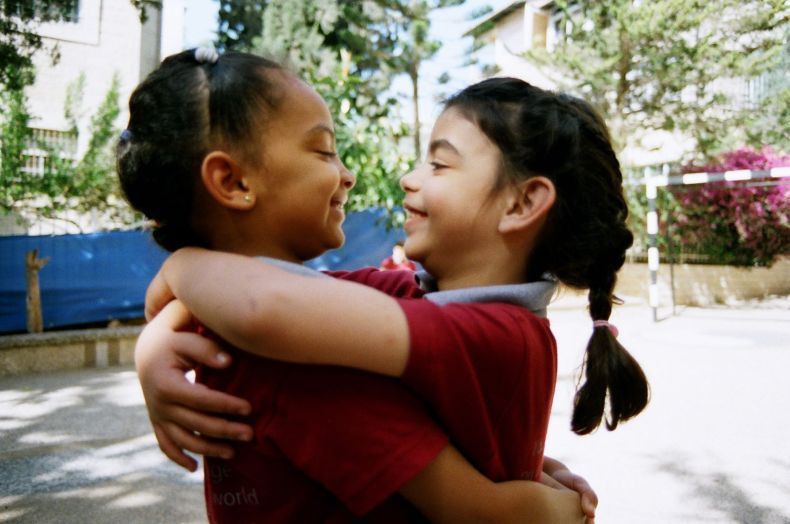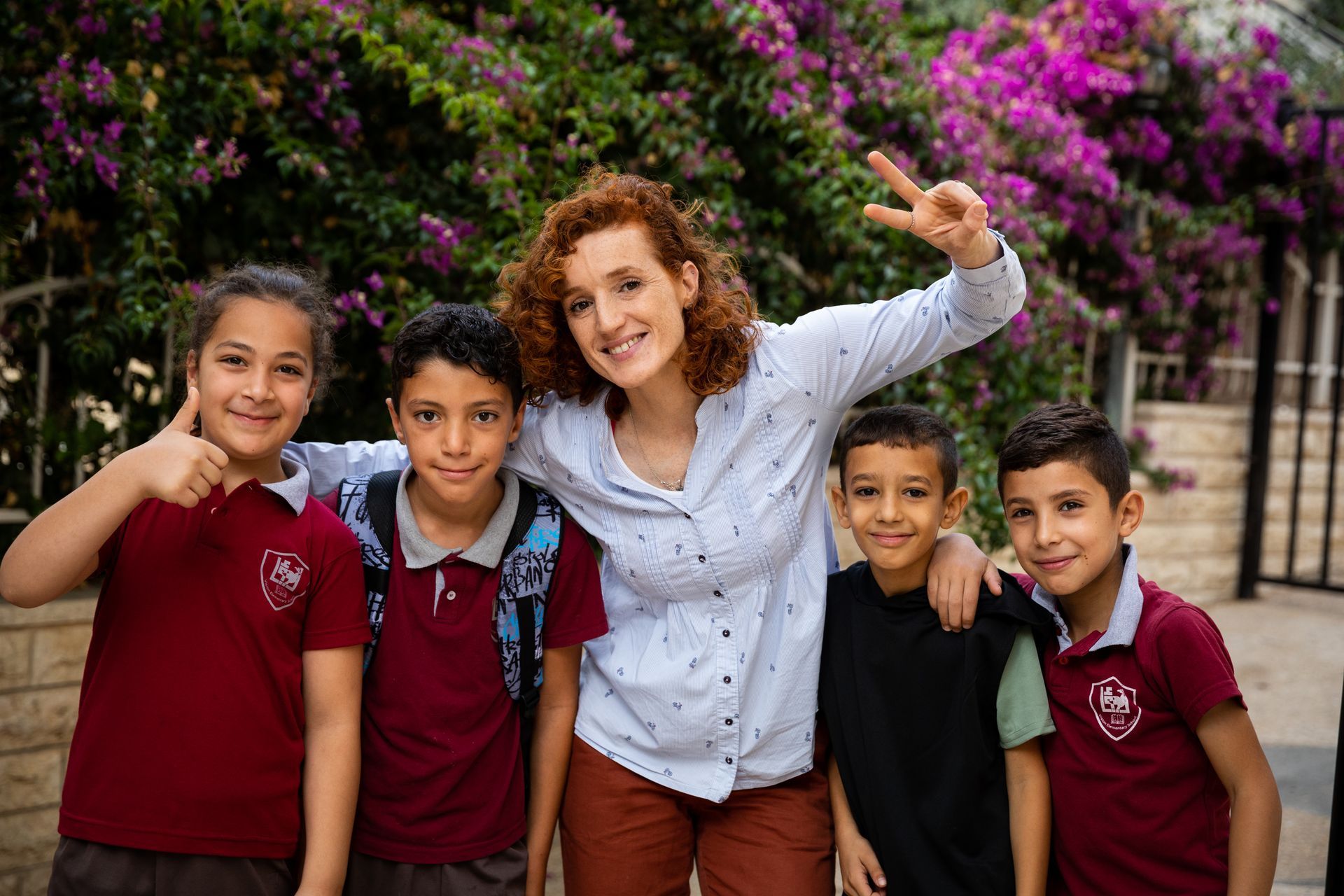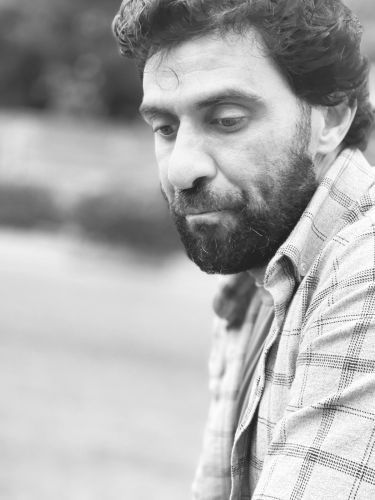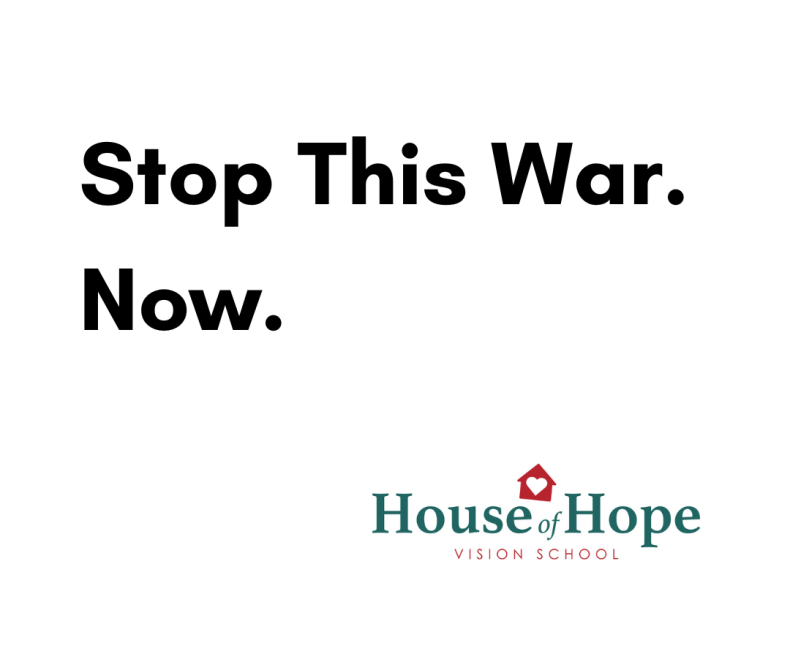What Is Trauma-Informed Education?
Trauma-informed education considers how trauma and toxic stress impact children’s ability to learn and develop in a healthy way.
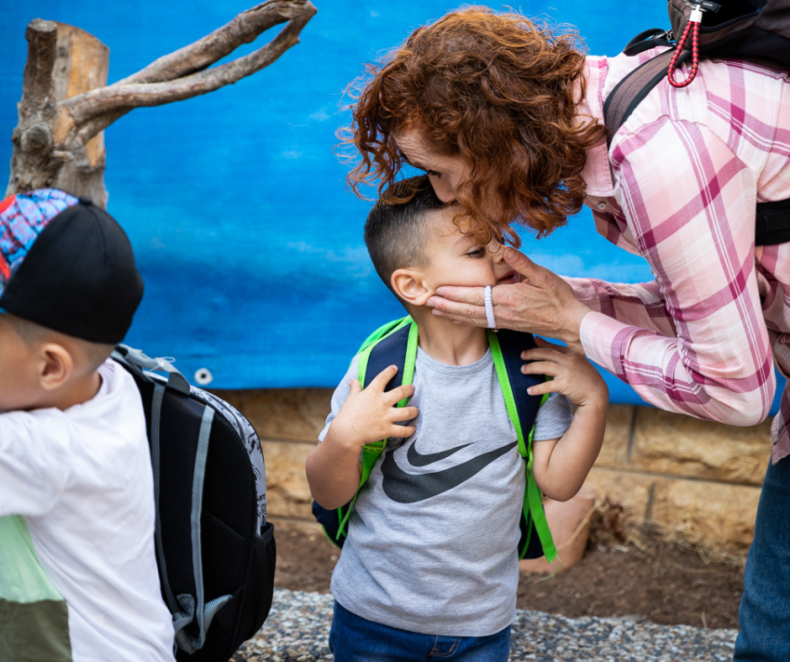
Toxic stress from traumatic childhood events such as war, military occupation, and poverty can wreak havoc on children’s mental and physical health.
Ask any medical professional and they will likely tell you that the repercussions of childhood toxic stress can be devastating- dramatically increased risk of heart disease, diabetes, obesity, depression, substance abuse, smoking, poor academic achievement, time out of work, and early death.
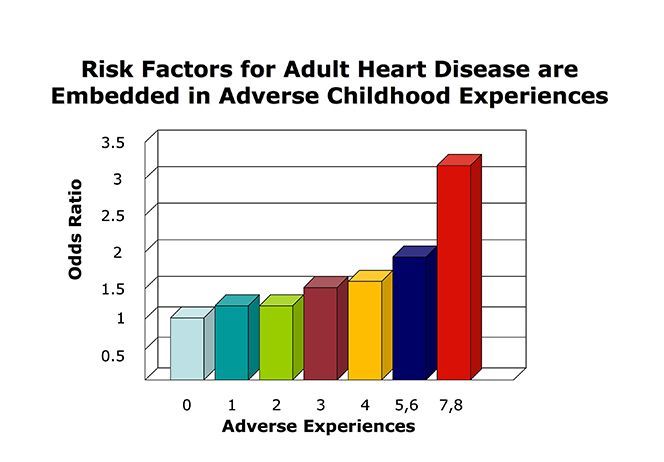
Similarly, adult reports of cumulative, adverse experiences in early childhood correlate to a range of lifelong problems in physical and mental health—in this case, heart disease.
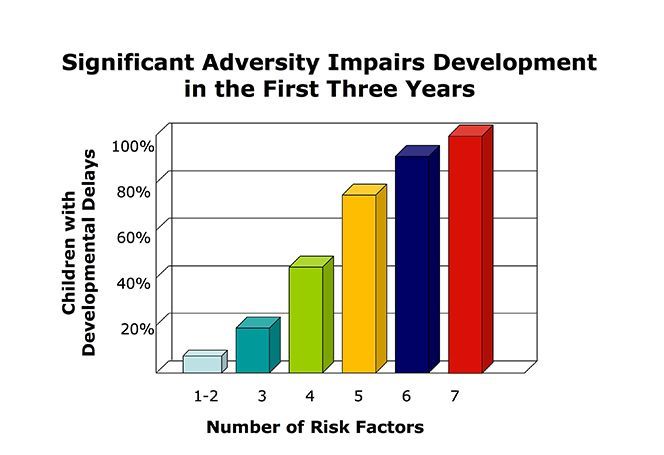
Outside of the home, childhood toxic stress from traumatic events is best addressed in a healing school environment.
But how can we best sculpt classrooms to equip children to overcome toxic stress and leap back into the magic of childhood?
This question, and the pursuit of its answer, is the starting point of trauma-informed education.
What is Trauma-Informed Education?
Children who experience traumatic events can be triggered by a traditional classroom, which requires activities that are inappropriate for trauma-affected children.
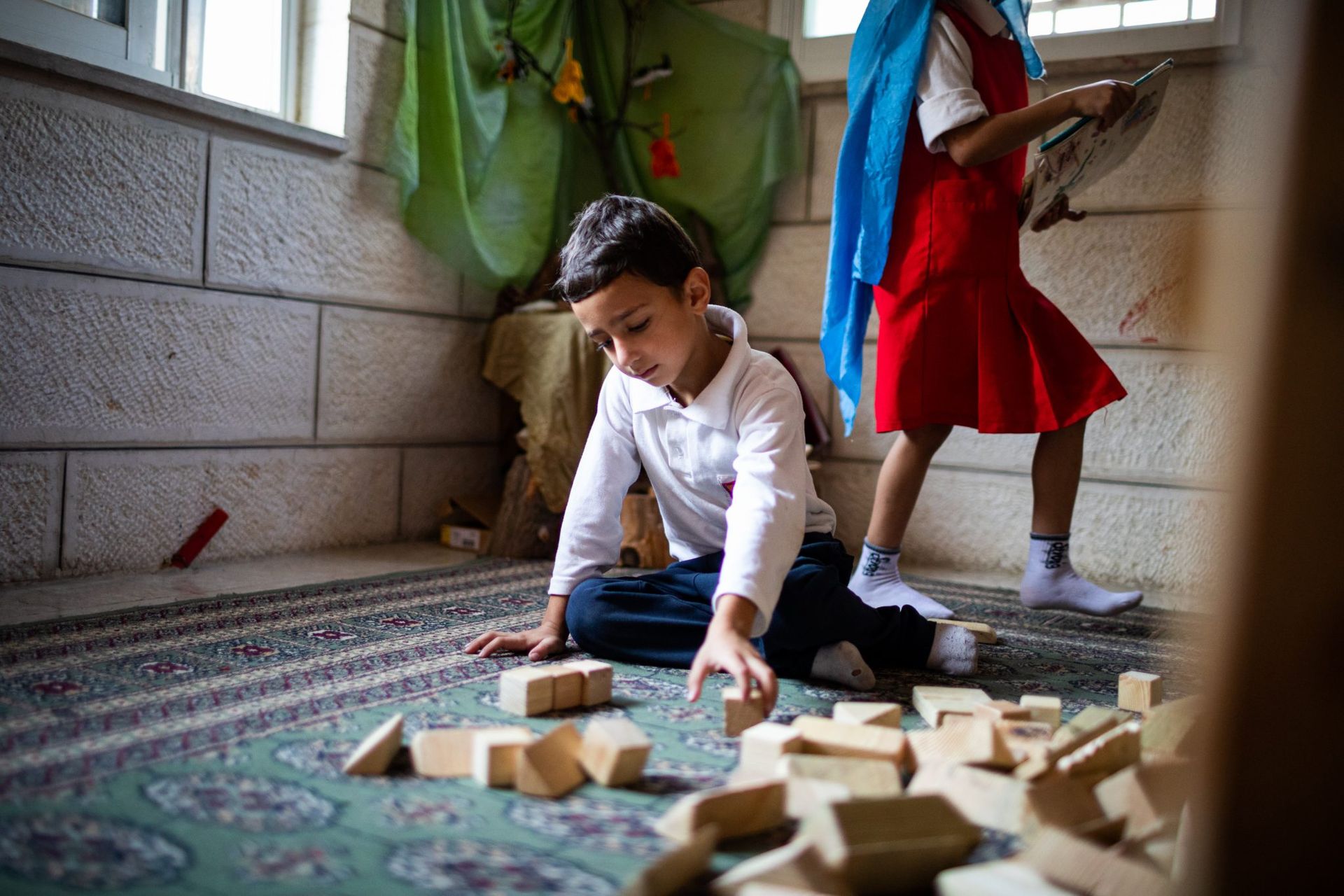
For example, traditional classrooms often require prolonged sitting at a desk and memorization. But trauma negatively affects the parts of children’s brains that allow them to remember information. Side effects like these make it hard for children to succeed academically in a traditional classroom, let alone develop skills for emotional recovery and social integration. As a result, many trauma-affected children perform poorly in school and have behavioral issues, which further drive down their self-esteem.
A burgeoning field within the academic study of education, trauma-informed education considers how trauma and toxic stress impact children’s ability to learn and develop in a healthy way.
In 2016, a landmark study was published by researchers at the University of Melbourne Graduate School of Education that helped define this important field. In their study, the researchers grouped the best approaches to trauma-informed education strategies in three categories: repairing regulatory abilities, repairing disrupted attachment, and increasing psychological resources.
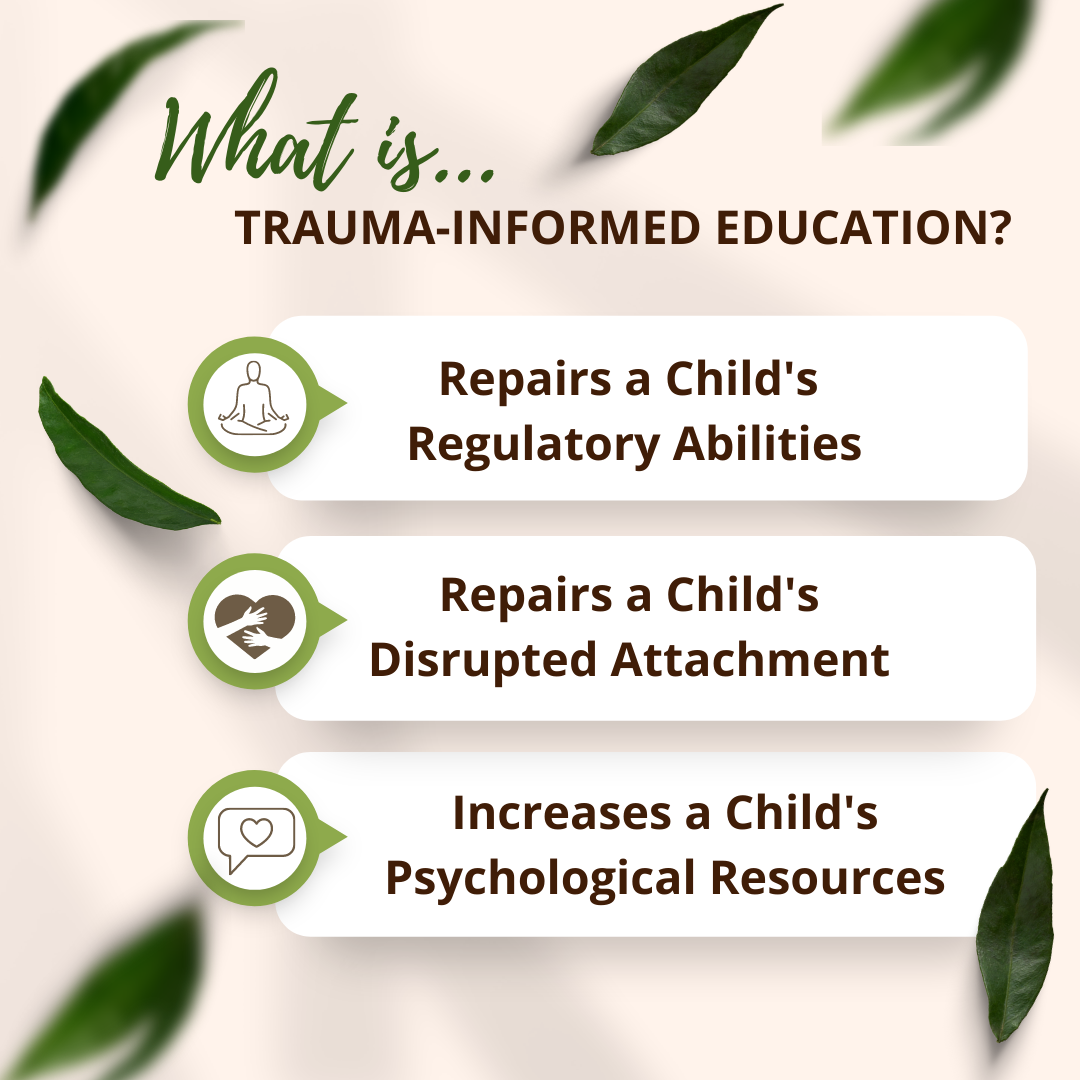
Trauma-Informed Education Repairs Regulatory Abilities
Regulatory abilities allow children to manage their own emotions and responses to different stimuli. But trauma suppresses a child’s development of emotional regulatory skills. Many then have difficulties practicing self-control – both in the classroom and outside of it. Educational activities that focus on sensory integration, self-regulation, rhythm, and repetition, and mindfulness applications to learning tasks can help a trauma-affected child develop their emotional regulatory abilities.
Trauma-Informed Education Repairs Disrupted Attachment
Similarly, repairing disrupted attachment — aiding children in creating positive relationships with their peers and adults — is a crucial component to trauma-informed education, which is based not only on the activities implemented in the class itself but also on the enduring relationships built between students and teachers that create a school community.
Trauma-Informed Education Increases Psychological Resources
Trauma-informed education also helps children increase psychological resources through activities that teach them to hold on to positive emotions in times of distress, identify messages and characters that exemplify resilience in classroom materials, and develop their strengths.
Trauma-informed education, in essence, seeks to repair disrupted developmental processes, as well as further build the strengths of the trauma-affected child.
While the three strategies are distinct, they can work in concert in a classroom setting to empower a trauma-affected child for a successful future.
Time is of the Essence
Traumatic events that occur when a child is between 3 to 6 years of age and the brain is undergoing crucial stages of development can cause the most harm. But despite the serious ramifications of childhood toxic stress, especially in conflict zones, trauma-affected children are not irreparably damaged. Far from it.
One of the most inspiring things about being human is our resilience and capacity to heal. That is why there is always a reason to hope.
Trauma-informed education can help children recover. For 15 years, House of Hope Vision School has protected the magic of childhood for children growing up under toxic war and occupation stress.
After nurturing thousands of Palestinian children, we believe trauma-informed education fosters lifelong resiliency.
“About the CDC-KAISER ACE Study |violence Prevention| Injury Center| CDC,” Centers for Disease Control, accessed April 6, 2021, https://www.cdc.gov/violenceprevention/aces/about.html?CDC_AA_refVal=https%3A%2F%2Fwww.cdc.gov%2Fviolenceprevention%2Facestudy%2Fabout.html
Tom Brunzell, Helen Stokes, and Lea Waters, “Trauma-Informed Positive Education: Using Positive Psychology to Strengthen Vulnerable Students,” Contemporary School Psychology 20 (2016): 65.
“Making SPACE for Learning: Trauma Informed Practice in Schools,” Australian Childhood Foundation, accessed June 21, 2021, www.childhood.org.au
Team Hope
Supporting House of Hope


